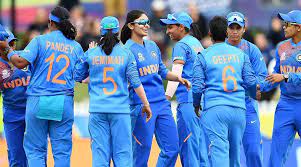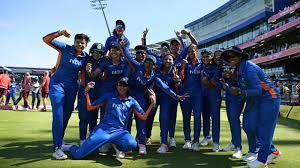Women in Blue in Asia Cup Final, We Can't Keep Calm!
3 minuteRead

By- Samyati Mohanty
Our country loves cricket! And when our own women in blue reach an Asia Cup Final, it's definitely a celebratory moment for us. A few years ago, the Indian women's cricket team won the World Cup and captivated the nation's attention. No doubt they are truly perfroming brilliantly well! The Fire Burns Blue is unquestionably one of the best books on cricket history in the nation and the first to focus on the history of Indian women's cricket. It was written by sports writers Karunya Keshav and Sidhanta Patnaik during this time. They followed women's cricket from its promising beginnings in the 1970s, when crowds numbering in the thousands were not uncommon at matches, to its progressive exclusion due to administrative indifference and the men's victory in the World Cup in 1983.
The status of women in Indian society and the difficult challenge of overcoming ingrained cultural stereotypes and internalised misogyny led to the development of women's cricket in the context of sports. Even in the 1970s, when being a woman in sports must have been anything but simple, female cricket players were not hesitant to speak up for themselves. The Indian ladies kept their ground and even launched a vicious counteroffensive in 1986 when the English team and media accused them of attempting to stall matches during the England trip. Similar to the infamous "Monkeygate" incident that occurred in 2008 in Australia.The powerful Board of Control for Cricket in India supported the men's team, but the women fought on their own and forced the England Women's Cricket Association to issue an apology.
Instead, topics discussed in the context of female cricketers are, such as pregnancy, menstruation, sexual orientation, violence, and harassment, seemed to be what the "Women in Blue" were most focused on. Whereas, the women expected equal accountability and respect based on their efficiency.
India defeated Thailand by 74 runs on Thursday to advance to the women's Asia Cup final, one of the most captivating recent examples of tenacity, perseverance, and dedication to cricket, both for its descriptions of previous generations of players and their struggles as well as its methods of dealing and finally evolving out of the stigma to prove their abilities and potential. Thailand's 20 overs were only enough to compile 74 for 9, falling short of the required 149 runs to win. Thailand's captain Naruemol Chaiwai and Nattaya Boochatham both scored 21, and the best Indian bowler was Deepti Sharma, who had a 3 for 7 record. India scored 148 for six when they were first called to bat. Jemimah Rodrigues and skipper Harmanpreet Kaur each made 36 and 27, while Shafali Verma scored 42.
This is how the women in blue succeeded by breaking all the barriers and outshined with flying colours. But this isn't the goal yet, there's so much to witness as the super women march towards the glory of victory one after the other, while India cheers for them..”Women in Blue!...Women in Blue!”
Banner image source: ESPN
Write, Record and Answer! Consume Unlimited Content! All you need to do is sign in and its absolutely free!
Continue with one click!!By signing up, you agree to our Terms and Conditions and Privacy Policy.














